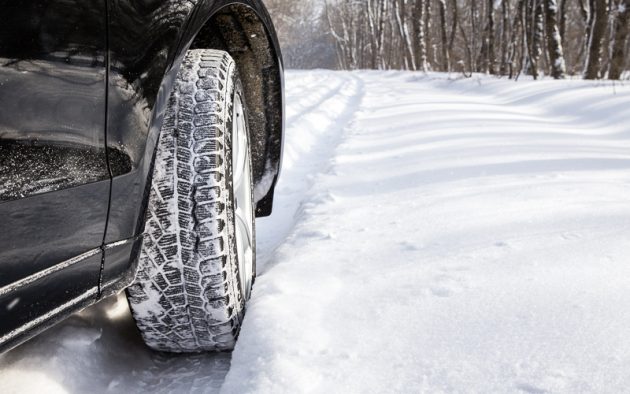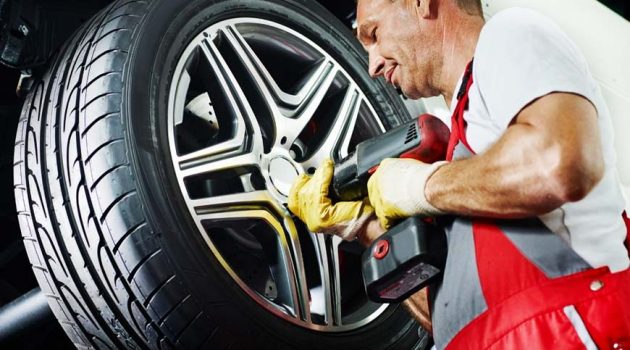
It always seems that the next winter is just around the corner. That feeling arises because there are so many preparations to consider for snowy, inclement weather the season brings. This statement is particularly true regarding driving in the wintertime. It is critical that you know when to execute a tire change for your safety, comfort and security on the road.
Indeed, winter driving is quite a challenge, especially if you are not familiar with the proper methods. For people raised in Northern climates, the winter season is typically a potent reminder of the unique experience they have with skidding and icy driving conditions, which their newer neighbors may lack. Ultimately, the winter tires will assist you, but they do not replace taking your time and driving for the conditions.
Why Winter Tires Are So Important

Source: pinterest.com
Many people put all-season tires on their vehicles and believe this prepares them for the winter weather ahead. But all-season tires are only right for moderate weather conditions, at best. You can certainly use them throughout summer and winter if you live somewhere that does not feature severe weather shifts during cold months. Extreme ice, snow and cold necessitate a more severe performer, winter tires.
According to experts in the industry, all-season tires wear quickly in low temperatures. They harden and stop gripping as they should. Without an effective grip, you can easily lose control of your vehicle. The lost grip also affects all-wheel drive and anti-lock braking systems. In winter and during sub-freezing temperatures, this can mean disaster.
A tire change which can be done at goodtirecalgary.ca to winter tires is not a major inconvenience or expense, when you consider the alternatives of driving without the reliability, safety and performance these tires provide. Winter tires can mean the difference between getting into an accident because of black ice, packed snow or freezing weather and navigating these conditions seamlessly. Additionally, there are certain jurisdictions where they are a requirement for you to have on your vehicle. Still, you will have to check with your local law enforcement for further information.
Winter tires feature resilient rubber compounds that remain flexible in very low temps. They also have deep treads for channelling snow and slush away from the tire. Sipes on the tires grab the road and frozen or slushy precipitation for better safety and handling, whether on unplowed surfaces or slippery streets. Furthermore, there are many manufacturers who have their own distinct and unique methods for dealing with winter tires. Finding the best type may be a lifelong journey if you are not well informed.
More benefits of changing to winter tires include:
- Greater peace of mind when driving
- Reliability for getting you where you need to go
- Increased grip for hill-based stops and starts
- Maximized abrupt stopping power
- Better maneuverability in frigid temps, deep snow and ice
When is the right time to put winter tires on your vehicle?

Source: sullivantire.com
A popular question for mechanics is when to put winter tires on the vehicle. This answer varies. But the best solution for most people is to change to winter tires when temperatures stay below 45 degrees Fahrenheit. You should also consider whether you drive in the daytime when temps are higher or during dark hours when they can drop to extremes without explicit warning.
If your vehicle currently sports summer tires, make your transition to winter ones after the temperature remains below 50 degrees Fahrenheit consistently. Additionally, you can change your winter tires on a set schedule throughout the year.
Indeed, this may not sound like the most effective way to handle the transition. However, if you dislike waiting in long lines, it can actually be a more beneficial choice. For instance, changing your tires every September may be a bit early some years, but you will always have the opportunity to avoid the rush of worried people coming in after the first snowfall.
End-of-Winter Return to All-Season or Summer Tires

Source: bmwofweststlouis.com
At the end of winter, switch your tires back to an all-season set when temps stay above 45 degrees Fahrenheit at night. For summer tires, make this change at a later time. You need to wait until your area has no chance of late freezes.
For the best answer in your area, ask your local mechanic or tire shop when to make the switch. They know your region best. But for the most part, you can use the 45-degree weather rule for all-season tires and 50 degrees for summer tires. By waiting until these temps, you will prolong the life of your tires and keep yourself safe when driving.
However, if you have an interest in following a set schedule, the system will still function during the springtime. Again, avoiding the tire change rush that happens in the spring can be worthwhile for some individuals. If this system suits you, consider changing your tires in February or March. Be wary that you may have to accommodate for a more extended winter season and more dangerous situations if you follow this method.
When should I replace winter tires with new ones?

Source: paautoinspection.com
Another critical question is when to replace your old winter tires with new ones. There is no precise life expectancy for all makes and models. But most tire makers suggest you replace your winter set after four seasons of wear. Always keep an eye on tread wear, of course. But this depends heavily on your driving habits, such as the mileage you drive and whether you regularly navigate snowy or icy roads. Freezing roads wear the tread out more quickly than from snow. Of course, the quality of the tires you own also plays a big role in when you need to make this tire change.
Therefore, the typical tire change schedule falls between 2-4 years. This frequency will always keep you on the safe side, and you can take advantage of any discounts or deals that your local tire store offers annually. Although there is some merit in changing based on the mileage of your tires, it can be hard to remember when they were initially installed.



